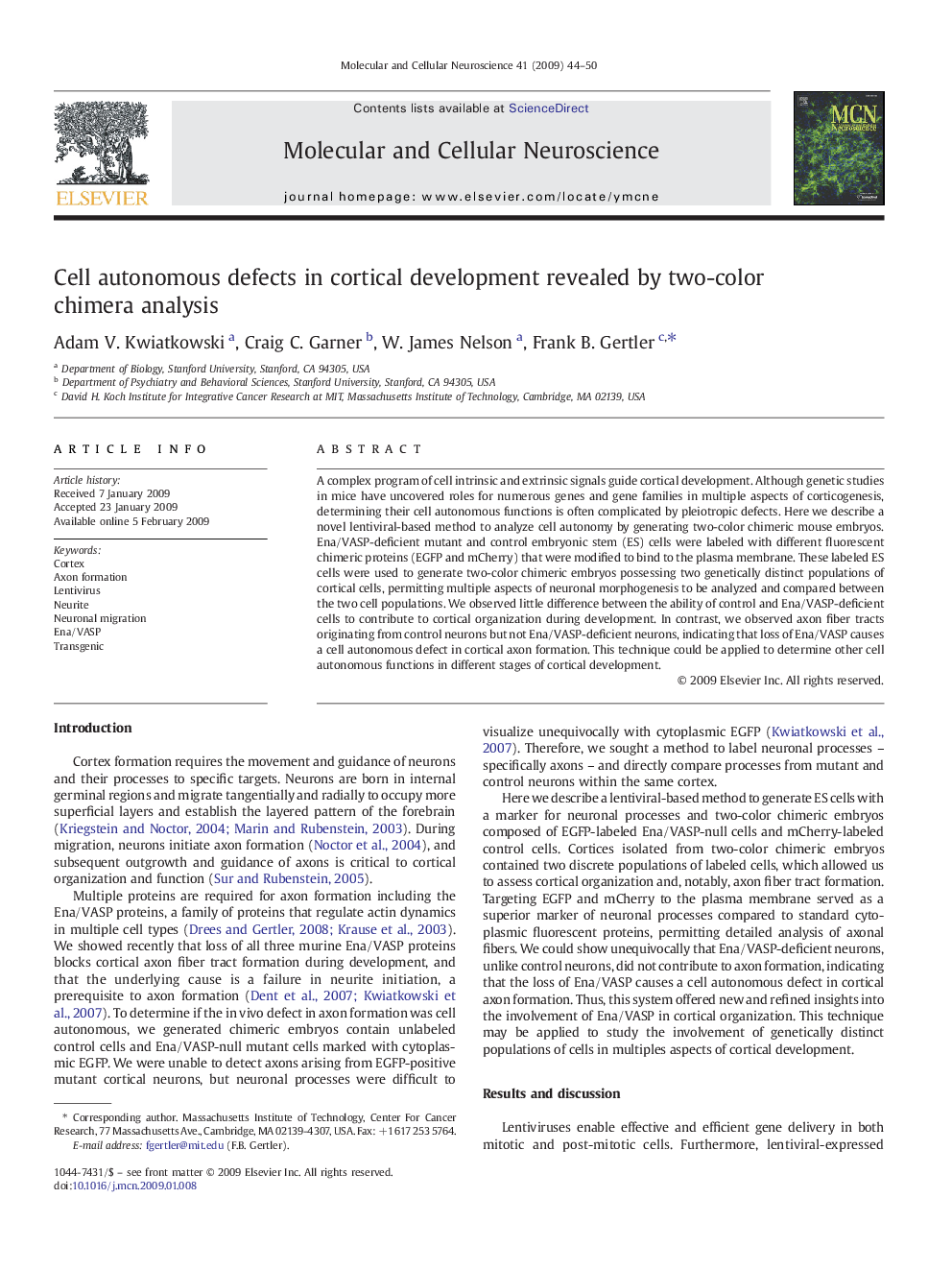| Article ID | Journal | Published Year | Pages | File Type |
|---|---|---|---|---|
| 2198815 | Molecular and Cellular Neuroscience | 2009 | 7 Pages |
A complex program of cell intrinsic and extrinsic signals guide cortical development. Although genetic studies in mice have uncovered roles for numerous genes and gene families in multiple aspects of corticogenesis, determining their cell autonomous functions is often complicated by pleiotropic defects. Here we describe a novel lentiviral-based method to analyze cell autonomy by generating two-color chimeric mouse embryos. Ena/VASP-deficient mutant and control embryonic stem (ES) cells were labeled with different fluorescent chimeric proteins (EGFP and mCherry) that were modified to bind to the plasma membrane. These labeled ES cells were used to generate two-color chimeric embryos possessing two genetically distinct populations of cortical cells, permitting multiple aspects of neuronal morphogenesis to be analyzed and compared between the two cell populations. We observed little difference between the ability of control and Ena/VASP-deficient cells to contribute to cortical organization during development. In contrast, we observed axon fiber tracts originating from control neurons but not Ena/VASP-deficient neurons, indicating that loss of Ena/VASP causes a cell autonomous defect in cortical axon formation. This technique could be applied to determine other cell autonomous functions in different stages of cortical development.
